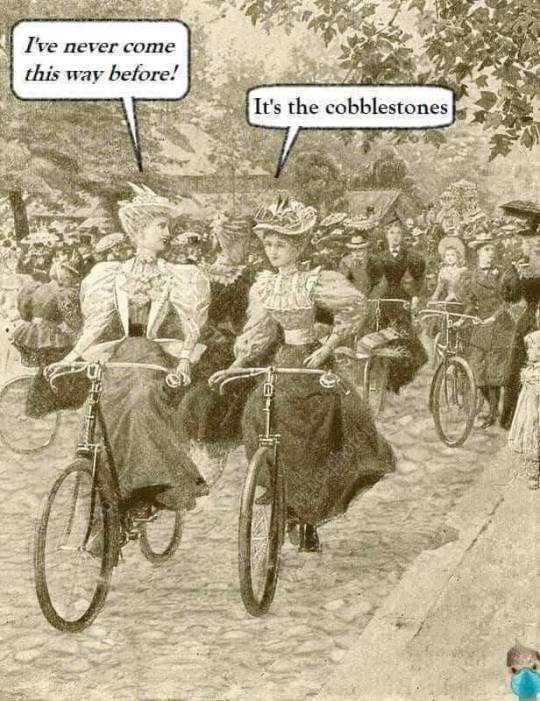#victorians
Text
Also, interesting note on Lucy’s condition. Stoker is actually subverting what was a common trope in that time period.
It was a common for characters in novels to fall ill, often from tuberculosis, which had similar symptoms as what Lucy is experiencing- paleness, loss of energy, difficulty breathing. A victorian reader would quickly recognise these symptoms, and the trope they are suggesting.
But in this case, nope, it’s not that rascally consumption this time, Lucy’s got a case of the vampires, lads.
12K notes
·
View notes
Photo
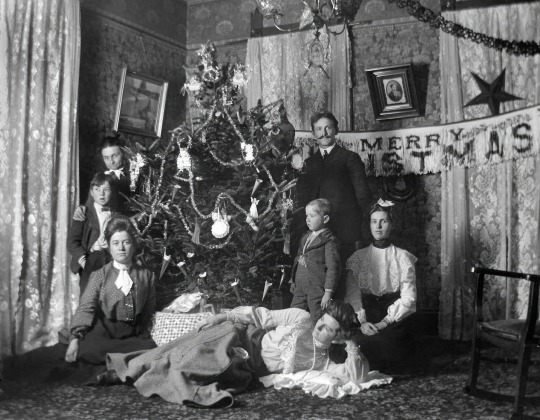
The history of Christmas traditions kept evolving throughout the 19th century, when most of the familiar components of the modern Christmas including St. Nicholas, Santa Claus, and Christmas trees, became popular. The changes in how Christmas was celebrated were so profound that it's safe to say someone alive in 1800 would not even recognize the Christmas celebrations held in 1900.
Washington Irving and St. Nicholas
Early Dutch settlers of New York considered St. Nicholas to be their patron saint and practiced a yearly ritual of hanging stockings to receive presents on St. Nicholas Eve, in early December. Washington Irving, in his fanciful History of New York, mentioned that St. Nicholas had a wagon he could ride “over the tops of trees” when he brought “his yearly presents to children.”
The Dutch word “Sinterklaas” for St. Nicholas evolved into the English “Santa Claus,” thanks in part to a New York City printer, William Gilley, who published an anonymous poem referring to “Santeclaus” in a children’s book in 1821. The poem was also the first mention of a character based on St. Nicholas having a sleigh, in this case, pulled by a single reindeer.
Clement Clarke Moore and The Night Before Christmas
Perhaps the best-known poem in the English language is “A Visit from St. Nicholas,” or as it’s often called, “The Night Before Christmas.” Its author, Clement Clarke Moore, a professor who owned an estate on the west side of Manhattan, would have been quite familiar with the St. Nicholas traditions followed in early 19th century New York. The poem was first published, anonymously, in a newspaper in Troy, New York, on December 23, 1823.
Reading the poem today, one might assume that Moore simply portrayed the common traditions. Yet he actually did something quite radical by changing some of the traditions while also describing features that were entirely new.
For instance, the St. Nicholas gift giving would have taken place on December 5, the eve of St. Nicholas Day. Moore moved the events he describes to Christmas Eve. He also came up with the concept of “St. Nick” having eight reindeer, each of them with a distinctive name.
Charles Dickens and A Christmas Carol
The other great work of Christmas literature from the 19th century is A Christmas Carol by Charles Dickens. In writing the tale of Ebenezer Scrooge, Dickens wanted to comment on greed in Victorian Britain. He also made Christmas a more prominent holiday and permanently associated himself with Christmas celebrations.
Dickens was inspired to write his classic story after speaking to working people in the industrial city of Manchester, England, in early October 1843. He wrote A Christmas Carol quickly, and when it appeared in bookstores the week before Christmas 1843 it began to sell very well.
The book crossed the Atlantic and began to sell in America in time for Christmas 1844, and became extremely popular. When Dickens made his second trip to America in 1867 crowds clamored to hear him read from A Christmas Carol. His tale of Scrooge and the true meaning of Christmas had become an American favorite. The story has never been out of print, and Scrooge is one of the best-known characters in literature.
Santa Claus Drawn by Thomas Nast
The famed American cartoonist Thomas Nast is generally credited as having invented the modern depiction of Santa Claus. Nast, who had worked as a magazine illustrator and created campaign posters for Abraham Lincoln in 1860, was hired by Harper’s Weekly in 1862. For the Christmas season, he was assigned to draw the magazine’s cover, and legend has it that Lincoln himself requested a depiction of Santa Claus visiting Union troops.
The resulting cover, from Harper’s Weekly dated January 3, 1863, was a hit. It shows Santa Claus on his sleigh, which has arrived at a U.S. Army camp festooned with a “Welcome Santa Claus” sign.
Santa’s suit features the stars and stripes of the American flag, and he’s distributing Christmas packages to the soldiers. One soldier is holding up a new pair of socks, which might be a boring present today, but would have been a highly prized item in the Army of the Potomac.
Beneath Nast's illustration was the caption, “Santa Claus In Camp.” Appearing not long after the carnage at Antietam and Fredericksburg, the magazine cover is an apparent attempt to boost morale in a dark time.
The Santa Claus illustrations proved so popular that Thomas Nast kept drawing them every year for decades. He is also credited with creating the notion that Santa lived at the North Pole and kept a workshop manned by elves. The figure of Santa Claus endured, with the version drawn by Nast becoming the accepted standard version of the character. By the early 20th century the Nast-inspired version of Santa became a very common figure in advertising.
Prince Albert and Queen Victoria Made Christmas Trees Fashionable
The tradition of the Christmas tree came from Germany, and there are accounts of early 19th century Christmas trees in America, but the custom wasn’t widespread outside German communities.
The Christmas tree first gained popularity in British and American society thanks to the husband of Queen Victoria, the German-born Prince Albert. He installed a decorated Christmas tree at Windsor Castle in 1841, and woodcut illustrations of the Royal Family’s tree appeared in London magazines in 1848. Those illustrations, published in America a year later, created the fashionable impression of the Christmas tree in upper-class homes.
By the late 1850s reports of Christmas trees were appearing in American newspapers. And in the years following the Civil War ordinary American households celebrated the season by decorating a Christmas tree.
The first electric Christmas tree lights appeared in the 1880s, thanks to an associate of Thomas Edison, but were too costly for most households. Most people in the 1800s lit their Christmas trees with small candles.
The First White House Christmas Tree
The first Christmas tree in the White House was displayed in 1889, during the presidency of Benjamin Harrison. The Harrison family, including his young grandchildren, decorated the tree with toy soldiers and glass ornaments for their small family gathering.
There are some reports of president Franklin Pierce displaying a Christmas tree in the early 1850s. But the stories of a Pierce tree are vague and there doesn't seem to be contemporaneous mentions in newspapers of the time.
Benjamin Harrison's Christmas cheer was closely documented in newspaper accounts. An article on the front page of the New York Times on Christmas Day 1889 detailed the lavish presents he was going to give his grandchildren. And though Harrison was generally regarded as a fairly serious person, he vigorously embraced the Christmas spirit.
Not all subsequent presidents continued the tradition of having a Christmas tree in the White House. By the middle of the 20th century, White House Christmas trees became established. And over the years it has evolved into an elaborate and very public production.
The first National Christmas Tree was placed on The Ellipse, an area just south of the White House, in 1923, and the lighting of it was presided over by President Calvin Coolidge. The lighting of the National Christmas Tree has become quite a large annual event, typically presided over by the current president and members of the First Family.
Yes, Virginia, There Is a Santa Claus
In 1897 an eight-year-old girl in New York City wrote to a newspaper, the New York Sun, asking if her friends, who doubted the existence of Santa Claus, were right. An editor at the newspaper, Francis Pharcellus Church, responded by publishing, on September 21, 1897, an unsigned editorial. The response to the little girl has become the most famous newspaper editorial ever printed.
The second paragraph is often quoted:
"Yes, VIRGINIA, there is a Santa Claus. He exists as certainly as love and generosity and devotion exist, and you know that they abound and give to your life its highest beauty and joy. Alas! how dreary would be the world if there were no Santa Claus. It would be as dreary as if there were no VIRGINIAS."
Church’s eloquent editorial asserting the existence of Santa Claus seemed a fitting conclusion to a century that began with modest observances of St. Nicholas and ended with the foundations of the modern Christmas season firmly intact.
By the end of the 19th century, the essential components of a modern Christmas, from Santa to the story of Scrooge to strings of electric lights were firmly established in America.
Source
182 notes
·
View notes
Photo

i’m in Victorian OC la-la land right now thanks
#OC art#Illustration#victorian oc#victorians#they're having a Pride and Prejudice 2005 moment#eliza#reznikov
915 notes
·
View notes
Text
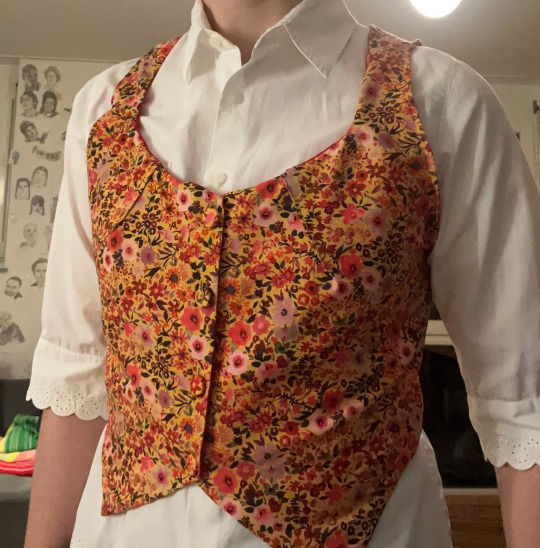
This. THIS. This is the best thing I have ever made. If I show you anything it’s going to be this. A Victorian waistcoat, tailored to my body perfectly without a pattern or a sewing doll, literally the epitome of gender euphoria. God, I love this thing so much.
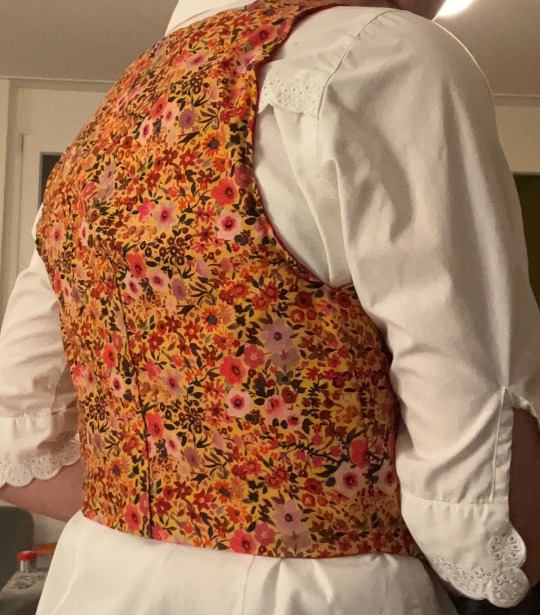
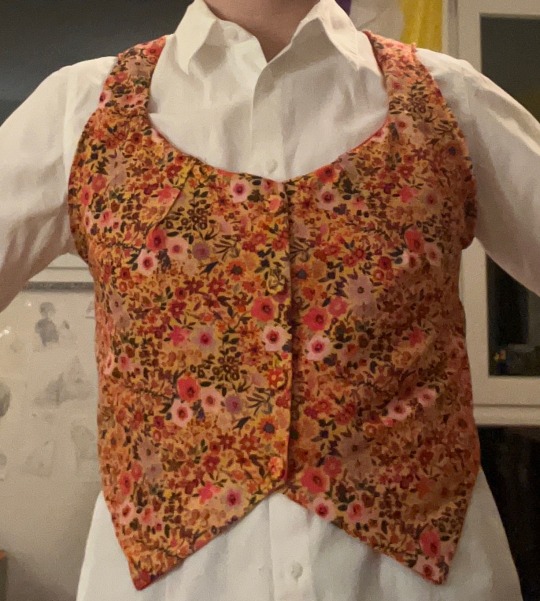

Ok, ok let me ramble a bit on why I love this so much please.
-gender: Victorian men are gender. Victorian men in their shirtsleeves are gender as fuck. as you can see I am somehow completely flat in this. I am not wearing a binder. That was not planned. This waistcoat just loves me.
-✨craftsmanship✨: I am literally so proud of this can you tell? Again, no one believed I could do this and that is the best motivation to get me to do something. I made the pattern myself, by pinning some scrap fabric to myself wearing an undershirt and drawing on lines and then sewing a rough mock-up, which I then altered for several weeks until it was perfect. Then traced the pattern onto the actual fabric. This also has red satin(like) lining on the inside, which means I basically made it twice and then sewed both pieces together. The fabric covered buttons I also made myself.
-I just literally always wanted to own something like that and I could never find anything close. This is why I love sewing. I love sewing so so much. Because I can dream of it and then I can just make it.
Ok rambling over bye <3



126 notes
·
View notes
Text
spike mentioning casually that he has eaten mummy in the past and buffy being kinda horrified at first thinking about ampata but then asking if it's a demon thing and spike going "oh, no, it was back when I was human"
#buffy the vampire slayer#btvs#buffy summers#buffy#spike#on the long list of 'spike is *like that* in part because he's a victorian'#shut up faraige#mummy#mummies#victorians
126 notes
·
View notes
Text

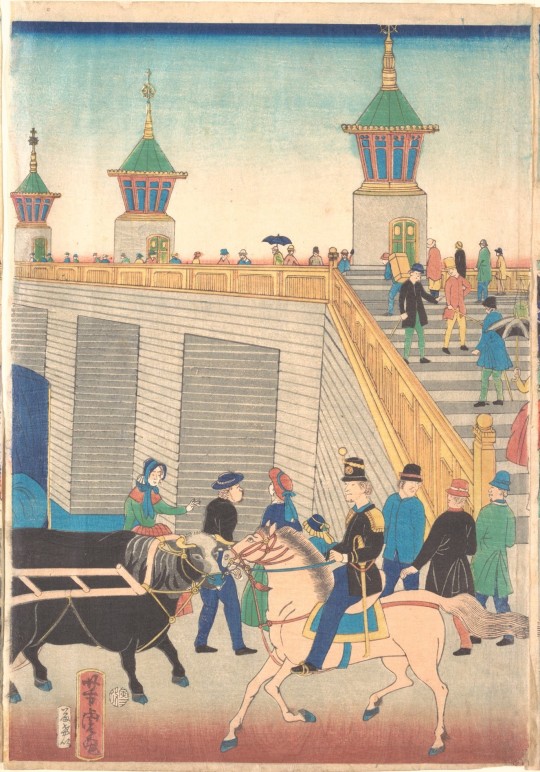

A triptych woodblock print depicting London in 1866, as imagined by Japanese artist Utagawa Yoshitora
#it's got St. Paul's in there whattayawant#london#intersectionality#victorians#19th century#art history
104 notes
·
View notes
Text
I’m not bad at talking about my feelings, I’m just bad at talking about my feelings in any way that doesn’t make me sound like an elderly Victorian man recounting his life story on his deathbed
62 notes
·
View notes
Text
A non-exhaustive list of dead people I have beef with in no particular order and for no particular reason
Alexander the Great. Great general, not nearly enough of an attention span for maintaining his empire
The Victorians. For making it weird. It being everything they ever wrote about. Except for flower language. That's cool.
Saint Paul. For having far too much of the New Testament ascribed to him and making my religion classes harder than they had to be.
Ea Nassir. He knows what he did.
Everyone involved in the burning of the Library of Alexandria.
Olaf Tryggvason. For his approach towards Christianising his sovereign (and not so sovereign) lands.
Whoever Mr. Rochester from Jane Eyre is based on.
Christopher Colombus.
The idiot that started the El Dorado legend. And all the idiots that believed him.
Lord Elgin. Fuck him and everyone like him.
Whoever thought it a good idea to steal one of the Easter Island sculptures
The person responsible for the Hermes scandal of 415 BCE.
Ioannis Kolettis and Alexandros Mavrokordatos. For having names that are very difficult to spell when you are ten and looking entirely too unlikeable in the illustrations of my history book.
Whoever decided "καταπλεω" (katapleo) should no longer have it's original meaning. We had a verd specifically for the act of sailing off to fuck shit up!
On a similar vein, whoever lost the recipe to the composition of Greek fire.
The academic that unironically called Sapfo straight
The person responsibilities for destroying part of the Homeric Hymn to Demeter. I have Questions.
The person who decided "Wednesday" should be spelled thusly
Everyone involved in the formation of modern German grammar and syntax.
The utter psychopath who made a show of publicly unwrapping mummies in front of an audience.
#stuff#late night word dump#I was an opinionated child#who liked to read#it had an effect#history#I do have receipts for most of those#and/or speculative fiction#of how much better things might have been#if they hasn't done the thing they did#ea nasir#victorians#you can blame them for so much
679 notes
·
View notes
Text

27 notes
·
View notes
Text

Bad news for anyone who wants to mitten a mechanic.
1890s author strongly advises not to in his dating guide.
308 notes
·
View notes
Text
Art History and Names
This is my Own Damn Fault for never caring to look of course, but just found out(via This Video Essay by Snappy Dragon. plz Watch :>) that the Pre-Raphaelites were NOT, in fact, Pre-Raphael but POST Raphael, by ALLOT, like "Romantic 1850s English Victorians" Allot; they just liked medieval art and ~blamed~ Raphael for aspects of contemporary art they didn't LIKE; and Dear Readers I am FUMING!!!!
Also, upgrading this from the tags cuz it's Vital Public information, 'Raphael Sanzio de Urbino' is Raph's full name, which you can absolutely read(I think) as "God Has Healed the Saint of the City" and DAMN that name is Fly as Hell XD XD
#Romanticism#Pre Raphaelites#Victorians#Raphael#Raphael Sanzio de Urbino#Art History#Etymology#Italian#zA Writes#Our Staff#zA's Endemic Historicality#zA's Painfully Ignorant Philology
10 notes
·
View notes
Text
The Kate Sharmas in Real Life : Indian women in 19th Century Attire
As an Austenite, I find Bridgerton an abomination, from the costume to plotline. However, like many people I found the 2nd season a bit tolerable especially the storytelling. Simone Ashley who was Kate Sharma (it’s rather pronounced as “sher-ma”) reminded me someone, especially someone dressed in western clothes in colonial India.
It is a preconceived notion by many that Indian people, especially women did not wore western clothes until it was post 1960s, but it is not true. The most fundamental garment, a blouse for saree was a Victorian addition. The eastern Indian women often worn saree as a single garment, and in ancient times, Saree or “akhanda vastra” (undivided cloth) was worn with a “kanchuki” underneath, or an Indian version of Bandeau. Blouse, in its modern form was then called a Chemise (semij, as the local vernacular called it). It came as in late 19th century, and the trendsetters were Upper class Bengali women. Rabindranath Tagore mentions how modern yet scandalising it was for a woman to wear a “Semij” in his numerous novels, especially in Chokher Bali .The picture below is of Princess Sudhira of Cooch Behar wearing what can be deemed as the earliest Indo-Western Fusion fashion in 1900s (she was known to have some good european wardrobe)

You might be thinking, Indo-Western garment is not anything near to the empire line Regency costume! yes, it is not. But before you at me, behold this historical photograph.

She is Maharani Suniti Devi, Queen of the Princely state of Cooch Behar, North Bengal. This shot was taken at 1902. I Know I am 100 years too late but during the 1813 Indian royals were busy from saving their states from the British Subsidiary Alliances, and Artisans were getting crushed by the flooding capitalists as the Monopoly of the East Indian Company was abolished by the 1813 Charter Act--- long story short, they didn’t wear the western garments that early. I picked her photo specifically because Simone Ashley, as Kate Sharma reminded me of her. Tall, slim, thin mouth, bright eyes, voluminous hair and dark skin.
It is not that there are no dark skin rulers in India, and there were no royal women who donned western clothes--there are: in Fact the Daughter of Daleep Singh, the last Sikh Emperor and the Maharani of Kapurthala, both were photographed in Late Edwardian costumes in the beginning of 20th century. My pick is specially Suniti Devi because she exudes a classic ethnic Bengali beauty. I am emphasising on the fact Bengali because in Indian pop-culture Bengali women are portrayed as docile soft shy beings venerated for their big eyes and pliant beauty. However here you can see that this women is anything but. She is properly clothed in Late Victorian gown. From the prim contours of the waist it is clear that she is wearing proper undergarments like longline corset; light bustle as it was fashionable at that time and the correct petticoat. Loose but well arranged Gibson curls define her thick Bengali waves at the front of the head. The entire thing does not come off as costume-like, she looks like she was made for wearing it: she was not obviously corset trained because Indians often prefer loose fitted clothing and yet she does not look least bit out of place in that dress.
Despite everything western in that dress from the Gibson hair to the black passmentary lace detaiiing on the white skirt, there is a distinct Indianness that graces the outfit. A long trail of English tulle is draped across the chest, as to emulate the shoulder drape of the saree: in India, a gentleman’s daughter is required to cover her chest with the drape of saree or a light scarf with Salwar. She didn’t need to; she was a Maharani, she could go without it, but she chose to drape it anyway. she also wears bangles in both hands, again a Custom by Bengali women who think a girl should not leave her wrists empty, because it symbolises widowhood. It was unlikely for a Victorian or Edwardian woman to wear bangles in both hands, especially without gloves-- but she did it anyway.
This distinct Indianness with western outfit is the exact essence which Kate replicated in the Wedding Scene
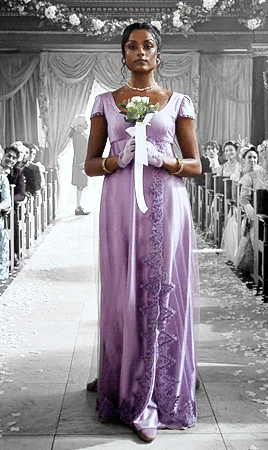
#bridgerton#kate sharma#period costume#indian queens#19th century attire#indian queens in western attire#regency#victorians#costume history#indo western#colonial indian history
79 notes
·
View notes
Text

Girls jumping off a wall in Fort Greene, May 22 1886
#history#victoriansunposed#victorianstyle#early photography#victorian style#victorians#edwardian#1880s
167 notes
·
View notes
Text
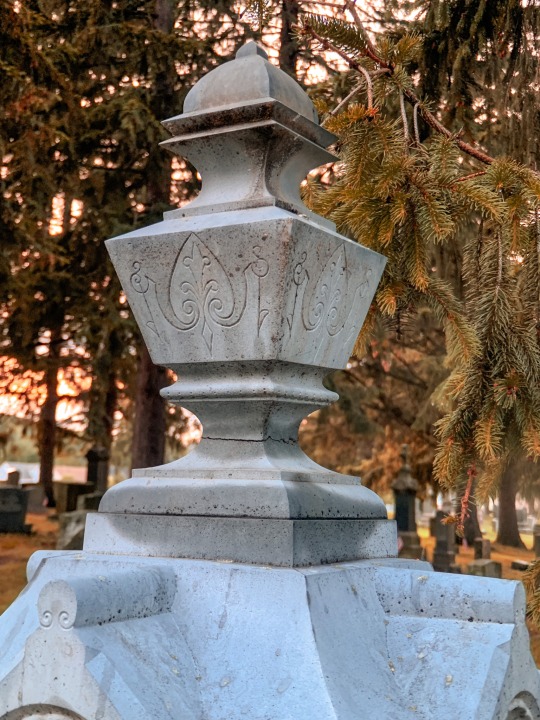

photos I took on my cemetery jaunt the other day
this poor lass was only 19 when she passed
her headstone was UTTERLY beautiful, I’m so blessed to have found a tombstone bearing one of the Victorian era’s most enduring motifs: clasped hands
within the Victorian cult of mourning, the clasped hands represent hands joined together across the divided realms of life and death, hands clasped together in prayer, etc.
“I’m with you for all eternity.”
#Victorians#spooky#tombstones#cemetery photography#cemetery photos#spooky photos#not all hands in Victorian jewelry and decor possess somber meanings or reference death or mourning#hands in Victorian decor/jewelry vary wildly in their meaning#but the Victorians were obsessed with hands#and I love the Victorians!
18 notes
·
View notes


